Wildlife - Species
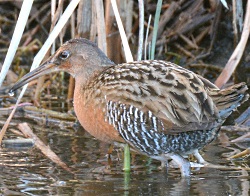
King Rail - Photo by Keith McCullough
Hunting Regulations
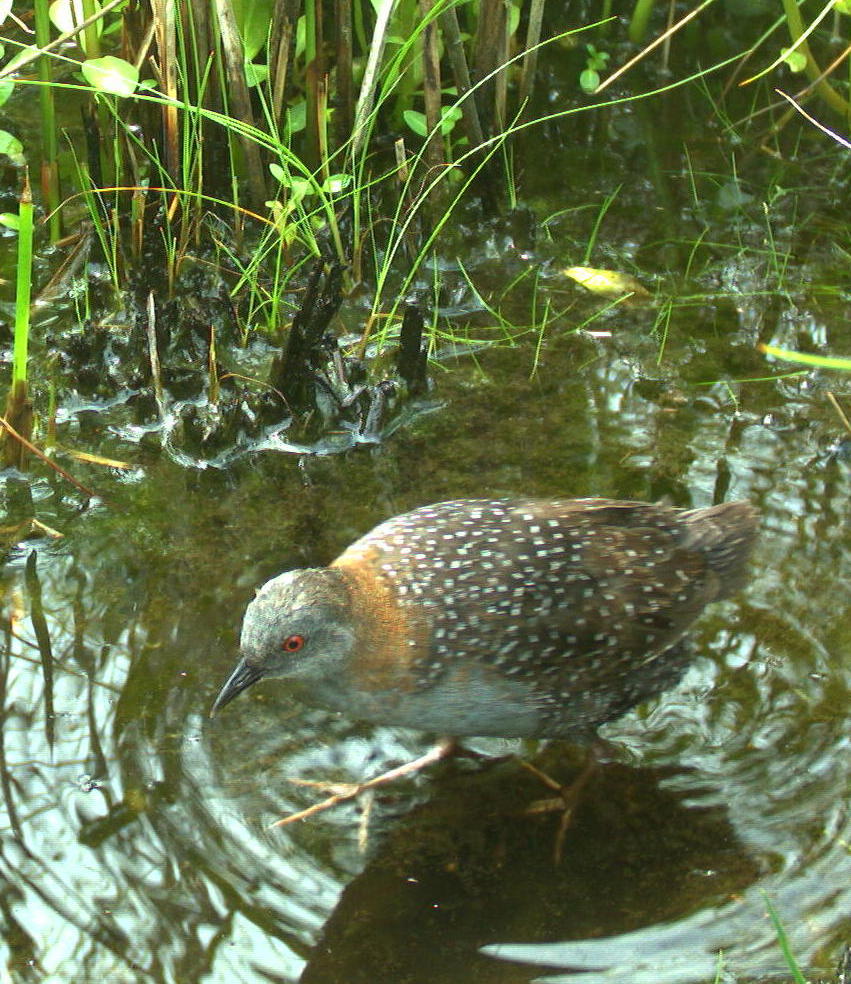
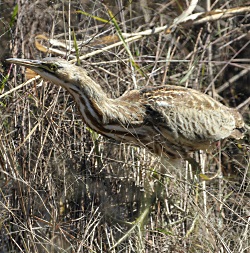
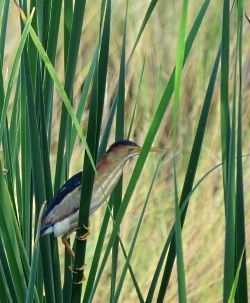
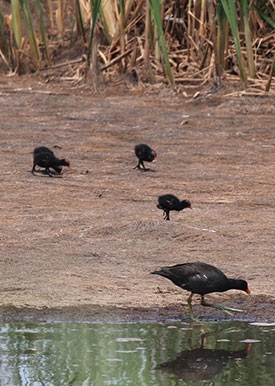
Marsh Birds
Description
The expansive wetlands in South Carolina provide habitat for a variety of marsh birds including rails, gallinules, bitterns, grebes, and coots. Many marsh bird species are heard more frequently than seen and have distinctive calls but cryptic plumage. Detailed information about the ecology and conservation statuses of the marsh birds of South Carolina is available in the species accounts in the State Wildlife Action Plan (SWAP).
Marsh Birds Regularly Observed in South Carolina
| Common Name | Scientific Name | Conservation Status | Hunting Season |
|---|---|---|---|
| American bittern | Botaurus lentiginosus | Highest priority | None |
| Black rail * | Laterallus jamaicensis | Highest priority; Federally Threatened | None |
| Clapper rail * | Rallus longirostris | Highest priority | Yes |
| Common gallinule * | Gallinula galeata | Moderate priority | Yes |
| Horned grebe | Podiceps auritus | Highest priority | None |
| King rail * | Rallus elegans | Highest priority | Yes |
| Least bittern * | Ixobrychus exilis | Highest priority | None |
| Pied-billed grebe * | Podilymbus podiceps | Highest priority | None |
| Purple gallinule * | Porphyrula martinica | Highest priority | Yes |
| Sora | Porzana carolina | High priority | Yes |
| Virginia rail* | Rallus limicola | High priority | Yes |
| Yellow rail | Coturnicops noveboracensis | Highest priority | None |
Species with an asterisks (*) behind their common names nest in the state. Other species are present during migration and/or their non-breeding season. Conservation statuses from the State Wildlife Action Plan (SWAP) and hunting seasons are from the Migratory Bird Regulations.
SCDNR Black Rail Project
Description
The Black Rail, a tiny marsh bird that rarely flies and spends most of its life hidden among marsh grasses, is among the least studied birds in North America. After we were alerted about the decline of the species in other areas of its range, SCDNR and partners initiated a project to determine the status and distribution of the species in South Carolina. Although Black Rails are very rare and localized, we determined they are present and breeding in several coastal counties.
Our current research focuses on the habitat requirements, breeding ecology, and management needs of the Black Rail in South Carolina. Applying the results of this research, SCDNR is now managing wetland habitat to benefit Black Rails and working with private landowners who are interested in managing for the species on their properties.
In addition to the research and management in South Carolina, we are working with regional and national partners on the development of conservation plans, management best practices, and standardized research protocols.
Christy Hand
Wildlife Biologist
SCDNR Wildlife and Freshwater Fisheries Division
585 Donnelley Drive
Green Pond, SC 29446
Email: handc@dnr.sc.gov
Amy Tegeler
Bird Conservation Coordinator
SCDNR Wildlife and Freshwater Fisheries Division
P.O. Box 23205
Columbia, SC 29224
Email: tegelera@dnr.sc.gov
Seasonal Crew Members
Rachel Bonafilia and Natalie Donofrio (2022)
Rachel Bonafilia, Spencer Weitzel, and Kirsten Steininger (2021)
Wray Gabel, Rachel Bonafilia, and Cynthia Worthington (2020)
Ella DiPetto, Carissa Adams, and Constance Powell (2019)
Katie Gundermann, Sammy Chandhok and Tori Thorpe (2018)
Ben Donnelley and Zena Casteel (2017)
Kristin Brunk, Samantha Apgar, and Abbie Dwire (2016)
Amy Baker, Sharon Ellison, and Kristin Brunk (2015)
Caitlin Bowman and Alix Pedraza-Larrotta (2014)
Research & Resources
Downloadable resources below are available in the PDF format.
South Carolina
- SCDNR Blog: Behind "Ghost Bird": Key Discoveries about the Elusive Black Rail
- Post and Courier: Ghost Bird by Tony Bartelme
- USFWS Black Rail Fact Sheet - South Carolina
- Rice Fields for Wildlife
- SCDNR Marsh Bird Survey – Final Report – 1993 PDF (file 6M)
Regional and National
- Eastern Black Rail Species Status Assessment
- Black Rail Conservation Plan – Atlantic Coast Joint Venture
- News Release – U.S. Fish and Wildlife Service proposes to list the eastern black rail as threatened under the Endangered Species Act
- National Marsh Bird Monitoring Program
- The Saltmarsh Habitat & Avian Research Program (SHARP)
